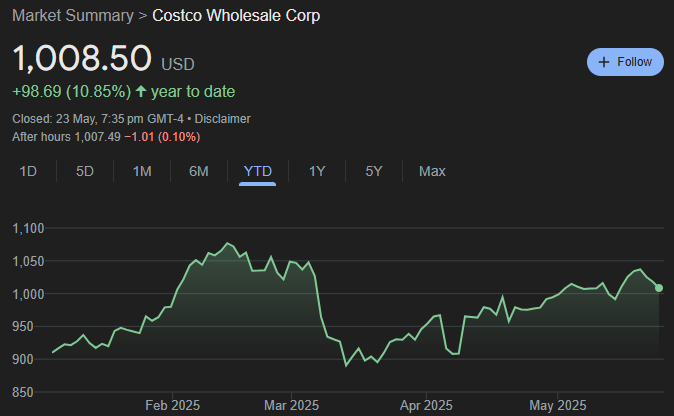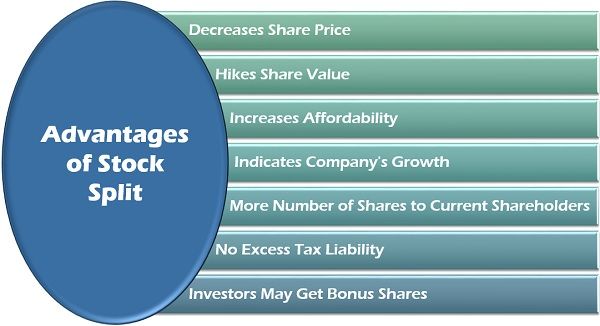A potential Costco Stock Split is a hot topic among investors as the retail giant's share price trades above $1,000 and its market capitalisation continues to climb.
But what exactly would a stock split mean for Costco's share price, trading liquidity, and investor base? Here's what every trader and investor should know about the impact of a Costco stock split in 2025.
Costco Stock Split History and Current Context

Costco has executed three stock splits in its history: 2-for-1 splits in 1991, 1993, and 2000. Since the last split, shares have soared by more than 2,700%, reaching all-time highs well above $1,000 in 2025.
Despite this meteoric rise, Costco's management has resisted splitting the stock for over two decades, even as peers like Walmart and Amazon have split their shares to boost accessibility and liquidity.
What Happens in a Stock Split?
A stock split increases the number of shares outstanding while proportionally reducing the share price. For example, in a 2-for-1 split, each shareholder receives an additional share for every share owned, and the price per share is halved. Importantly, the company's total market capitalisation and the value of each investor's holdings remain unchanged.
Impact on Share Price
Lower Price per Share: A split would reduce Costco's share price (e.g., from $1,000 to $500 in a 2-for-1 split), making it more affordable for retail investors who may be deterred by high nominal prices.
No Change to Fundamentals: The split does not affect Costco's earnings, market cap, or the percentage ownership of shareholders. It is a cosmetic change, not a fundamental one.
Potential for Short-Term Volatility: Splits can sometimes lead to brief price swings as traders react to increased accessibility and media attention, but long-term performance is driven by business fundamentals.
Impact on Liquidity
Increased Trading Volume: Historically, stock splits increase trading activity by making shares more accessible to a broader range of investors, especially those with smaller portfolios.
Greater Retail Participation: A lower share price can attract new retail investors, broadening the shareholder base and potentially increasing demand.
Improved Market Perception: Some investors view a split as a sign of management's confidence in future growth, which can enhance sentiment and trading interest.
Does a Stock Split Benefit Investors?

Potential Benefits
Affordability: Lower prices per share make it easier for individuals to buy round lots or participate in employee stock purchase plans.
Liquidity: More shares and a broader investor base can tighten bid-ask spreads and improve price discovery.
Psychological Appeal: Investors may feel more comfortable buying shares at a lower price, even though the underlying value is unchanged.
Potential Drawbacks
No Guarantee of Higher Prices: While splits can boost demand, they do not guarantee long-term price appreciation. The company's fundamentals remain the key driver.
Dilution Concerns: Although splits do not dilute ownership, they do increase the number of shares outstanding, which can sometimes lead to short-term volatility.
EPS Adjustment: Earnings per share (EPS) will be adjusted downward proportionally, but the company's total earnings are unaffected.
Analyst and Management Perspectives
Analysts have suggested that a split could act as a catalyst for Costco shares, especially as the price remains high and retail interest grows.
However, Costco's management has cited the rise of fractional share trading and the company's high institutional ownership (around 70%) as reasons a split is "less economically necessary" in today's market.
What History Tells Us
Costco's previous splits in the 1990s were followed by periods of strong performance and membership growth. After the 1993 split, shares rose 45% in the following year.
Despite not splitting since 2000, Costco has delivered a 1,200% return, far outpacing the S&P 500. This suggests that while splits can boost liquidity and accessibility, long-term gains are ultimately driven by business growth and strong fundamentals.
Conclusion
A Costco stock split would lower the share price and increase the number of shares, making the stock more accessible and potentially boosting liquidity. However, it would not change the company's market value or fundamentals.
Investors should view a split as a tool for greater accessibility and trading activity, not as a guarantee of future gains. As always, Costco's strong business model, membership growth, and consistent earnings remain the true drivers of its long-term value.
Disclaimer: This material is for general information purposes only and is not intended as (and should not be considered to be) financial, investment or other advice on which reliance should be placed. No opinion given in the material constitutes a recommendation by EBC or the author that any particular investment, security, transaction or investment strategy is suitable for any specific person.























